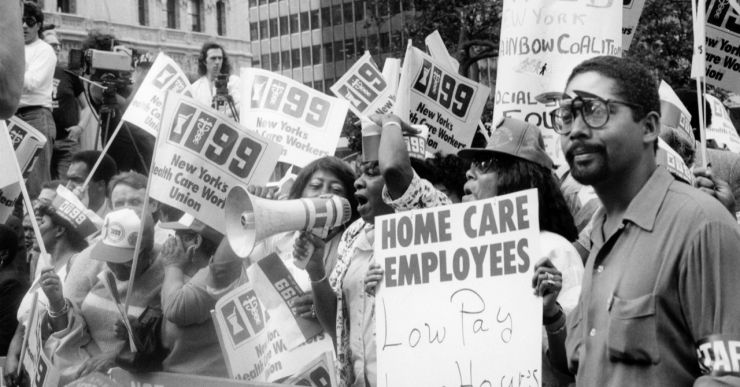Remembering 1199’s history: Big Gains for Homecare Workers in 1988
May 12, 2021

Following the victory of the progressive 1199 slate in 1987, the leadership voted to organize a forgotten sector of workers – the overwhelming female and multiethnic home healthcare workforce.
Recent growth had diversified the workforce from predominantly African American and Latinos to include large numbers of Russia, Haitian and Chinese women. Pay was abysmal. A 1985 Union survey found that the most common salary was about five thousand dollars a year.
The workers lacked unemployment or health insurance, and all of the other benefits that 1199 had won for hospital and nursing home workers. One worker testified at a New York City Council hearing that she had worked seven days a week for 16 years without ever earning overtime pay.
1199 framed the fight for these workers as an economic and civil rights struggle. Washington D.C. Rep Eleanor Holmes Norton headed New York City’s Human Rights Commission in the 1970s. She called homecare workers “a neglected sector in the civil rights struggles.”
Earlier in the year, 1199 had endorsed the Rev. Jesse Jackson’s run for the presidency. He, together with then Manhattan Borough President David Dinkins and John Cardinal O’Connor, the Roman Catholic archbishop of New York, championed the workers’ cause. They lead a City Hall rally that drew the city’s attention to the workers’ plight.
The Union drive resulted in big gains, including health benefits and a 51% raise bringing wages up to $6.20 an hour. Later that year, the Union established a new Home Health Care Division. Today the Union represents more than 125,00 homecare workers throughout its regions.

